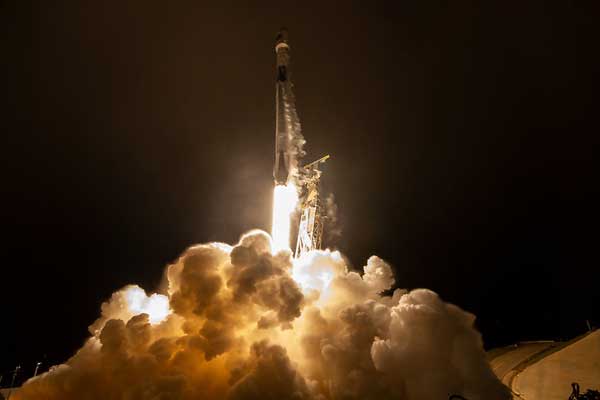
SpaceX and CASC Close Out Record Launch Year (Image Credit: Payload)

SpaceX and the China Aerospace Science and Technology Corporation (CASC) launched two times apiece this week to end a record year that saw 186 launch attempts around the world.
A SpaceX Falcon 9 launched 54 Starlink satellites into orbit from Cape Canaveral Space Force Station in Florida. The company launched 1,722 Starlink satellites on 34 dedicated launches this year. SpaceX has launched 3,666 Starlink spacecraft since February 2018.
Orbital Launches
Dec. 25-31, 2022
| Date | Launcher – Organization | Payload – Organization | Purpose | Launch Site |
|---|---|---|---|---|
| Dec. 27 | Long March 4B – CASC* | Gaofen 11-04 – CNSA+ | Earth observation | Taiyuan |
| Dec. 28 | Falcon 9 – SpaceX | 54 Starlink – SpaceX | Broadband | Cape Canaveral |
| Dec. 29 | Long March 3B/E – CASC* | Shiyan 10-02 – SAST^ | Tech demo | Xichang |
| Dec. 29 | Falcon 9 – SpaceX | EROS-C3 – ImageSat | Reconnaissance | Vandenberg |
+China National Space Administration
^Shanghai Academy of Spaceflight Technology
SpaceX completed its 61st and final launch of the year on Dec. 29. A Falcon 9 booster launched the EROS-C3 reconnaissance satellite for ImageSat of Israel from Vandenberg Space Force Base in California.
SpaceX tied Russia for the highest number of launches in a single year. The 61 launches was three short of China’s 64 launch attempts and one shy of China’s 62 successful launches this year. SpaceX nearly doubled its total of 31 launches in 2021.
CASC launched the Gaofen 11-04 Earth observation for the China National Space Administration on Dec. 27 on a Long March 4B rocket. The launch was conducted from the Taiyuan Satellite Launch Center.
CASC’s 53rd and final launch came two days later. A Long March 3B/E orbited the Shiyan 10-02 technology demonstration satellite from the Xichang Satellite Launch Center.

Total Launches
The United States led the world with 87 launch attempts, including 84 successes, two failures and one partial failure. China was second with a record of 62 successes and two failures.
The U.S. and China combined for 151 launches, with 146 successes, four failures and one partial failure. That represents 81.2% of all launch attempts. The number rise to 173 launches (93%) when Russia’s 22 successful launches are included.
Orbital Launches
2022: 186 (178-7-1)
2021: 146 (135-10-1)
| Nation | Successes | Failures | Partial Failures | Total | Percentage of Total |
|---|---|---|---|---|---|
| United States | 84 | 2 | 1 | 87 | 46.8 |
| China | 62 | 2 | 0 | 64 | 34.4 |
| Russia | 22 | 0 | 0 | 22 | 11.8 |
| Europe | 4 | 1 | 0 | 5 | 2.7 |
| India | 4 | 1 | 0 | 5 | 2.7 |
| Iran | 1 | 0 | 0 | 1 | 0.5 |
| South Korea | 1 | 0 | 0 | 1 | 0.5 |
| Japan | 0 | 1 | 0 | 1 | 0.5 |
| Total | 178 | 7 | 1 | 186 | 100 |
The rest of the world launched 13 times, with 10 successes and three failures. Europe and India accounted for 10 launches, with eight successes and a pair of failures. Europe’s Vega-C failed on its second flight, and India’s Small Satellite Launch Vehicle went awry on its maiden launch.
South Korea conducted its first successful launch of a domestically manufactured booster when a Nuri rocket roared off the pad at the Naro Space Center on June 21. It was the second launch for the booster, which failed on its maiden flight in 2021.
Iran launched a small reconnaissance satellite. Japan’s lone launch attempt of the year failed when an Epsilon rocket veered off course.
Related Stories
Global: U.S. & Dominated Launch Industry in 2022, Russia Finishes a Distant Third
Europe: Vega-C Launch Failure Ends Frustrating Year for Europe
Russia: The Best Laid Plans of Mice and Dmitrys: Russian Space Industry Ends 2022 in Isolation
Russia: Russia’s 2022 Launch Total Reduced by Ruptured Relations with West Over Ukraine
SpaceX: Who Launched What on SpaceX’s Five Transporter Missions








